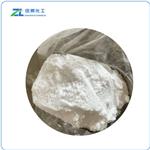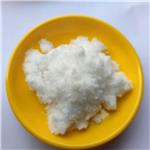Chemical Properties
Crystalline solid with a camphor-like odorand taste; sublimes; mp 97°C (206°F)(hemihydrate 78°C (172°F)); bp 167°C(332°F); soluble in water and organic solvents..
Uses
Pharmaceutic
aid (antimicrobial agent).
Uses
Chlorobutanol is used as a plasticizer forcellulose esters, as a preservative for hypodermic solutions, and in veterinary medicineas a mild sedative and antiseptic.
brand name
Chloretone (Parke-Davis).
Health Hazard
Chlorobutanol exhibited moderate toxicity intest animals. A lethal dose by oral intake indogs and rabbits were 238 and 213 mg/kg,respectively (NIOSH 1986). The toxic symptoms are not reported. This compound isa mild skin and eye irritant and may bemutagenic.
Clinical Use
1,1,1-Trichloro-2-methyl-2-propanol is a white crystallinesolid with a camphorlike aroma. It occurs in an anhydrousform and a hemihydrate form, both of which sublime at roomtemperature and pressure. Chlorobutanol is slightly soluble inwater and soluble in alcohol and in organic solvents.
Chlorobutanol is used as a bacteriostatic agent in pharmaceuticalsfor injection, ophthalmic use, and intranasal administration.It is unstable when heated in aqueous solution, especially at pH greater than 7. Under these conditions,chlorobutanol undergoes elimination. Solutions with a pHof approximately 5 are reasonably stable at 25°C.Chlorobutanol is stable in oils and organic solvents.
Waste Disposal
A suitable method of destruction of chlorobu tanol is the burning of its solution in a com bustible solvent in a chemical incinerator.



